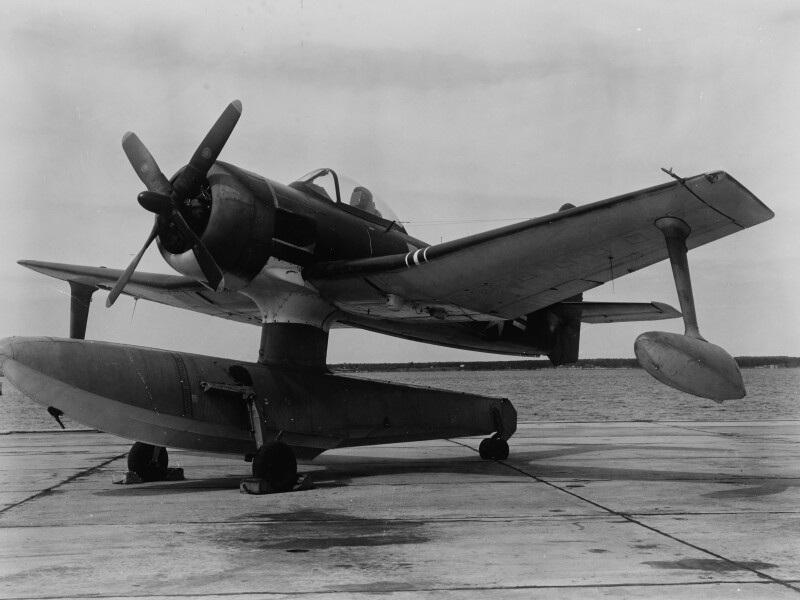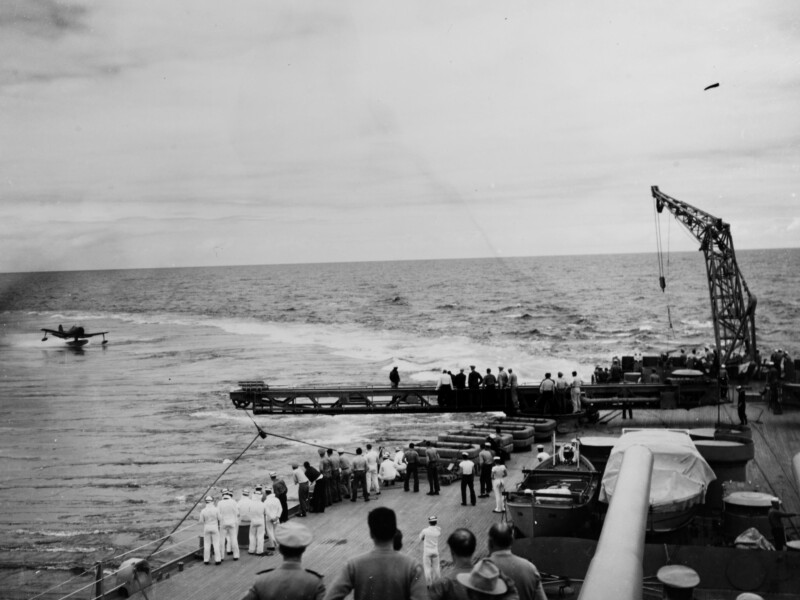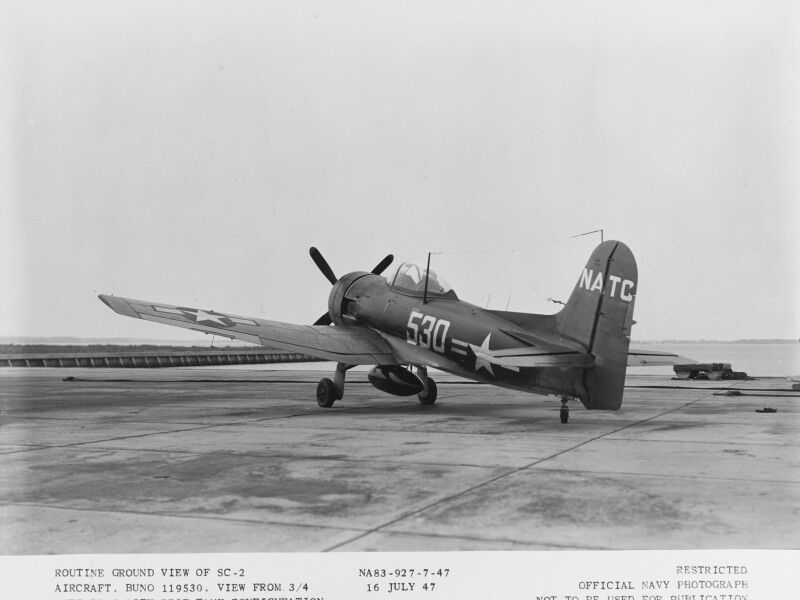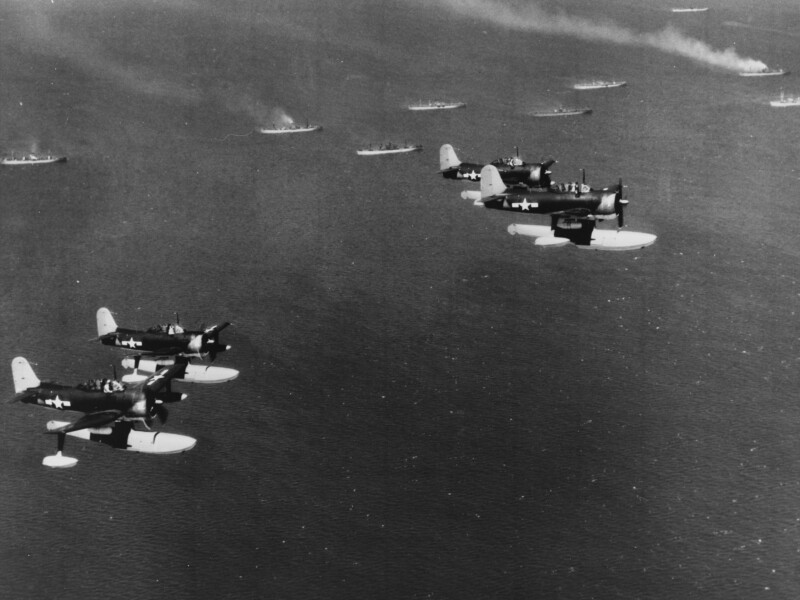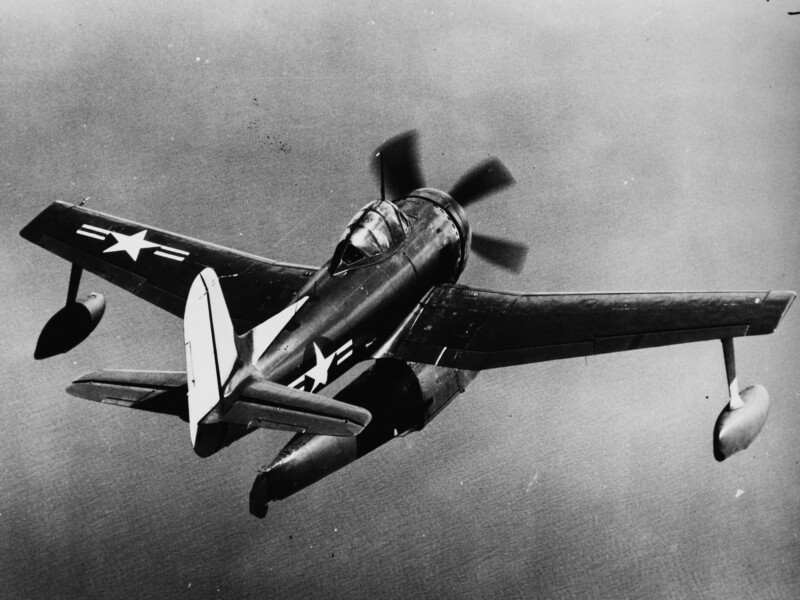-
Library
- Photos
- Documents
-
Geography
- Airfields
- Areas
-
Aviation
- Aircraft
- Engines
-
Weapons
- Guns
- Rockets
- Torpedoes
-
Avionics
- Radio
- Radar
- IFF
- Radar Detectors
- Jammers
- Navigation Devices
-
Unit Database
- Allied Units
- Axis Units
-
Pilot Database
- Pilots
- Victory Claims
- Torpedo Attacks
Curtiss SC Images

In flight, circa 1944, fitted for land ops. Clear, unframed section of canopy, longer engine cowling, and cabin accommodation behind pilot (note fuselage window) distinguished the SC-2 from the earlier SC-1. Note radome beneath STBD. Wing.
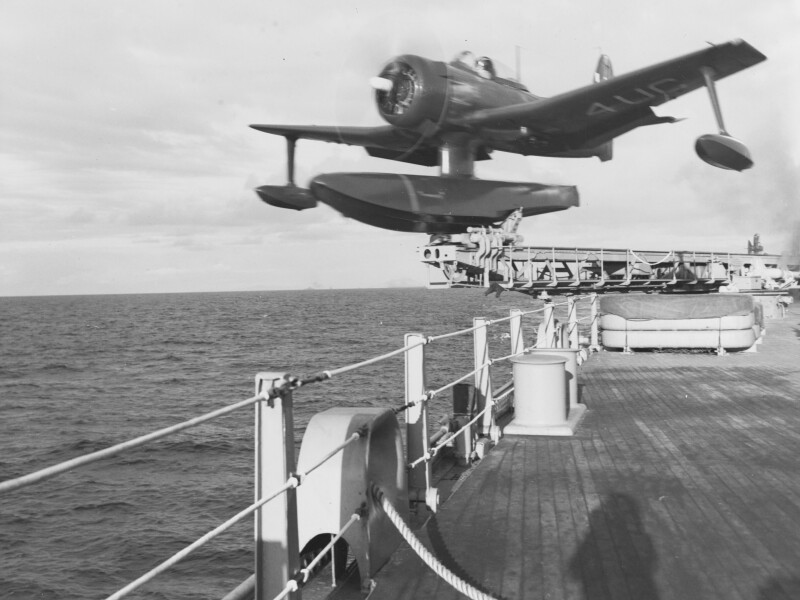
Catapults a Curtiss SC-2 Seahawk floatplane, piloted by Ensign F.H. Gilkie. Photo is dated 27 February 1948. Official U.S. Navy Photograph, now in the collections of the National Archives.

USS Alaska (CB-1) One of the ship's Curtiss SC-1 floatplanes taxiing up to the landing mat streamed alongside, to be picked up by the aircraft crane. Photographed on 6 March 1945 during the Iwo Jima operation. Official U.S. Navy Photograph, now in the collecti
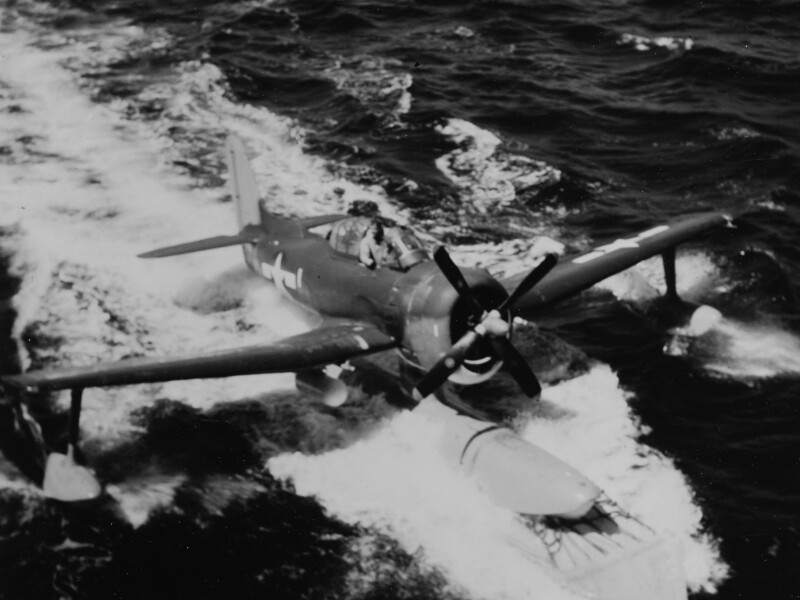
USS Alaska (CB-1) Recovering a Curtiss SC-1 floatplane on 6 March 1945, during the Iwo Jima operation. The aircraft is awaiting pickup by the ship's crane after taxiing onto a landing mat. The pilot was Lieutenant Jess R. Faulconer, Jr., USNR. Official U.S. Na

Warms up its engine at a Pacific Base, circa 1944-45. Note beaching gear and ladder, the former bearing markings of VCS-10 and SOSU-17 plane wears the insignia of unit SOSU -1, a bird flying with a mechanic ' tool box gripped in its feet. SOSU means Scout-Obse
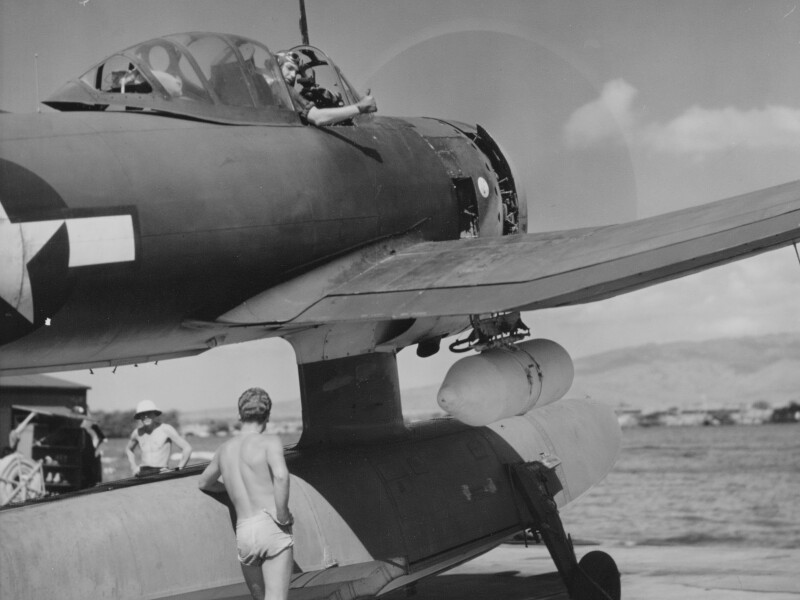
Pilot gives "thumbs-up" signal to beaching crew who are preparing to launch the plane into the water at a Pacific base, circa 1944-45. Note APS-4 radar pod under the wing and insignia of Scout-Observation Service Unit One (SOSU-1) on the nose. Beaching gear is

Spotting plane, taxiing up to a sea-sled towed by USS IOWA (BB-61), off San Francisco, July 1947.
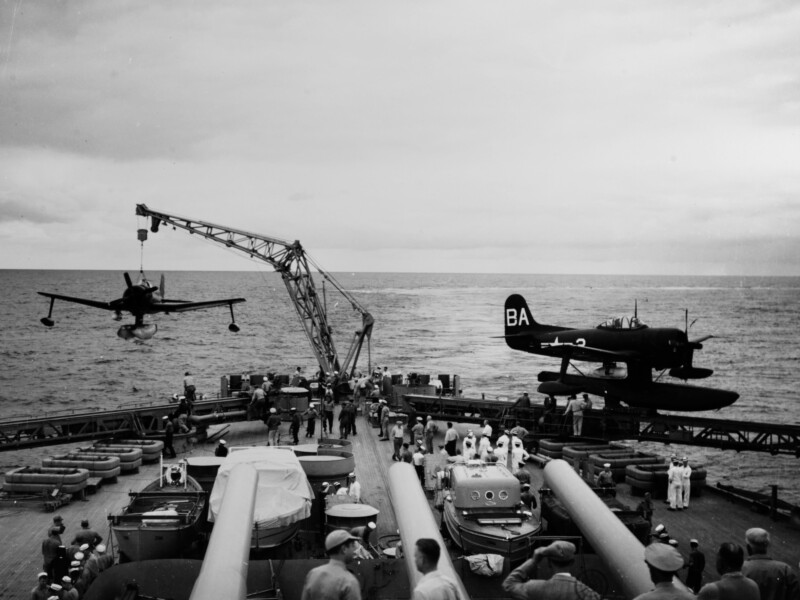
Spotting plane being hoisted aboard USS IOWA (BB-61), off San Francisco, July 1947. A second SC-1 is on the catapult at right.

Spotting plane, catapulted from USS IOWA (BB-61), off San Francisco, July 1947.

